The minimum wage in every state and DC in 2022
Half of all US states are raising the minimum wage this year
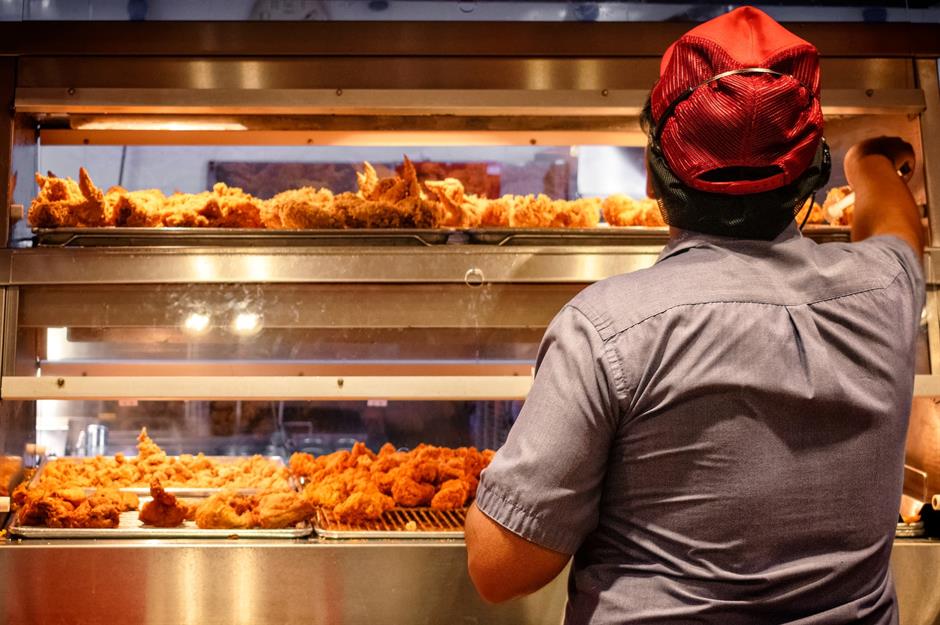
If the minimum wage had increased in line with productivity, every working American would be earning at least $26 an hour. This might sound like a pipe dream when you consider that five US states still don't offer a minimum wage at all.
But with President Biden's Executive Order 14026 now in force, which will raise the minimum wage for federal contractors to $15 an hour from January, this year has rung in major changes.
By the end of 2022, more than 80 jurisdictions will have raised the minimum wage for non-federal employees too, of which around 50 will pay all workers $15 or more. Read on to discover how state-imposed minimum wages vary across the US, and see how your state compares to the rest of the country.
Louisiana: no minimum wage
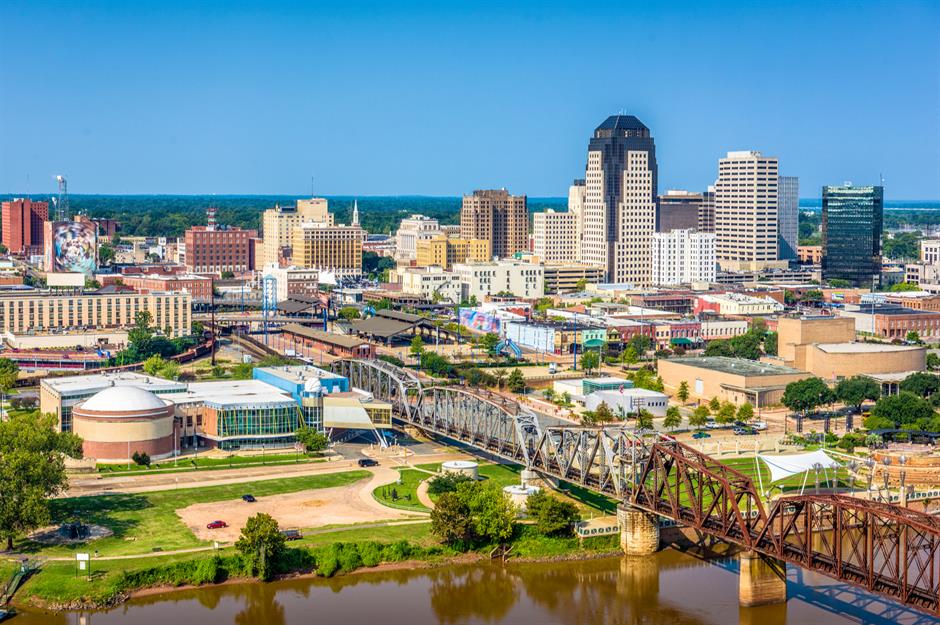
Louisiana is one of a handful of US states that doesn't have a minimum wage law in place. Despite growing pressure from underpaid workers, who have successfully campaigned for pay rises in other parts of the country, the state has no plans to change this in 2022.
It rejected bills to increase the minimum wage from $7.25 in both 2019 and 2020, although the New Orleans City Council independently approved a measure that will raise the minimum wage this year for city employees to $15 an hour.
Mississippi: no minimum wage

Mississippi is the most impoverished state in the USA, with a poverty rate of 18.7% according to the US Census Bureau. It's also the only state without an equal pay law to ensure that workers doing the same job receive the same pay, regardless of their gender.
Like Louisiana, Mississippi defaults to the federal minimum wage of $7.25 an hour, without imposing a minimum wage of its own. The proposed 2019 Mississippi Minimum Wage Act aimed to increase hourly pay to $10 by 2022 but the motion never passed. A similar bill the following year also failed to get past lawmakers
Alabama: no minimum wage
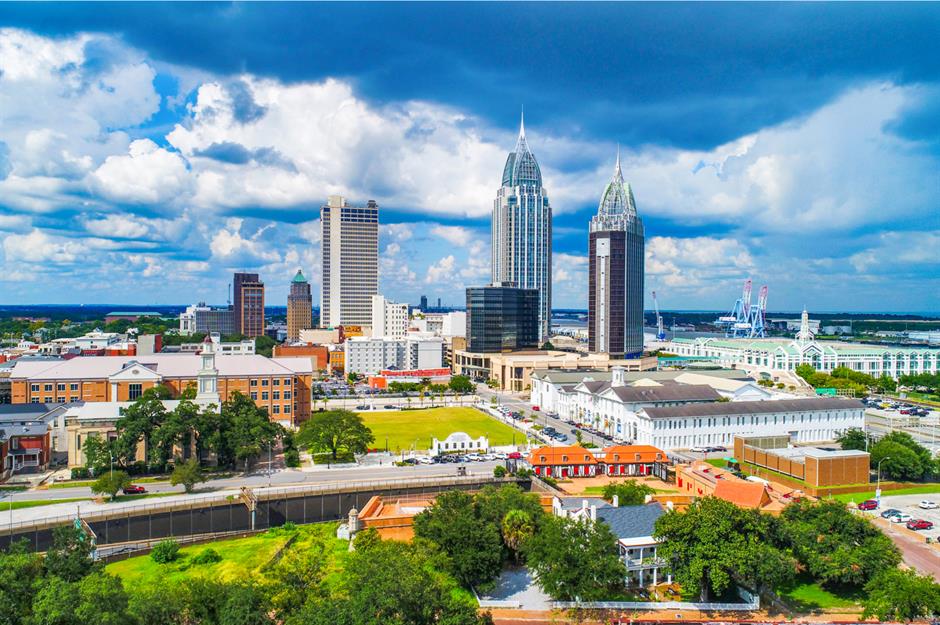
The Yellowhammer State also has no minimum wage besides the federal rate, although the city of Birmingham has been fighting to increase its minimum wage since 2016.
Unlike other states, lawmakers in Alabama have prevented individual jurisdictions from creating their own rates, a decision it made after Birmingham voted in favor of a $10.10 hourly wage almost six years ago. It has upheld this rule despite legal challenges from workers throughout the state.
South Carolina: no minimum wage
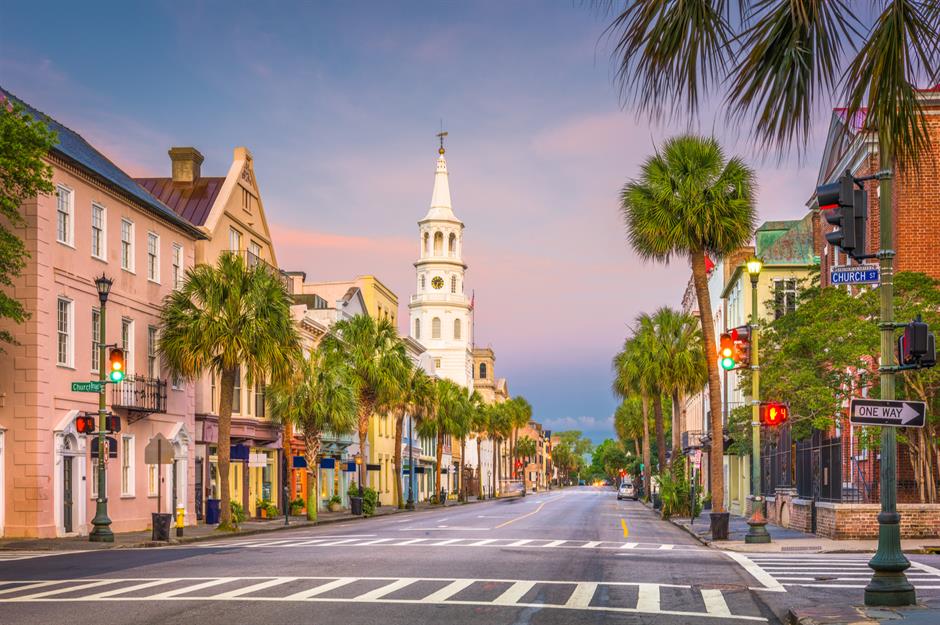
The minimum wage in South Carolina has reflected the federal rate of $7.25 since 2008. Campaigners have been pushing for $15 an hour since 2012 as part of a national movement called 'Fight for $15'.
In summer 2021, workers at fast food chains around Charleston – including McDonald’s, Burger King, and Wendy’s – went on strike but to no avail. A third of South Carolina's workforce is currently paid at minimum wage and they won't see any pay rises in 2022.
Tennessee: no minimum wage

At 4.1%, Tennessee had the second highest percentage of workers earning the federal minimum of $7.25 or less in 2018, according to the US Department of Labor (the national average is 2.3%).
The state has seen several attempts to increase its minimum wage, the most recent of which – the Tennessee Minimum Wage Act, which aimed to increase from $7.25 to $12 an hour – was killed in May 2021.
Georgia: $5.15

One of just two states where the minimum wage is below the federal rate, Georgia has been clinging on to its $5.15 hourly rate since 2001 and has no plans to raise it in line with the national trend. For most workers, however, the $7.25 federal minimum wage applies. The only employees that can earn less than this are those who aren't covered by the Fair Labor Standards Act (FLSA), which constituted just 2% of the workforce in 2019.
In Georgia's oldest city Savannah, meanwhile, the 2022 budget has approved a pay rise of 8% that will boost the minimum wage to $15 this year. That means those on the state's highest minimum wage could earn almost $20,000 more a year than those on the lowest in 2022.
Wyoming: $5.15
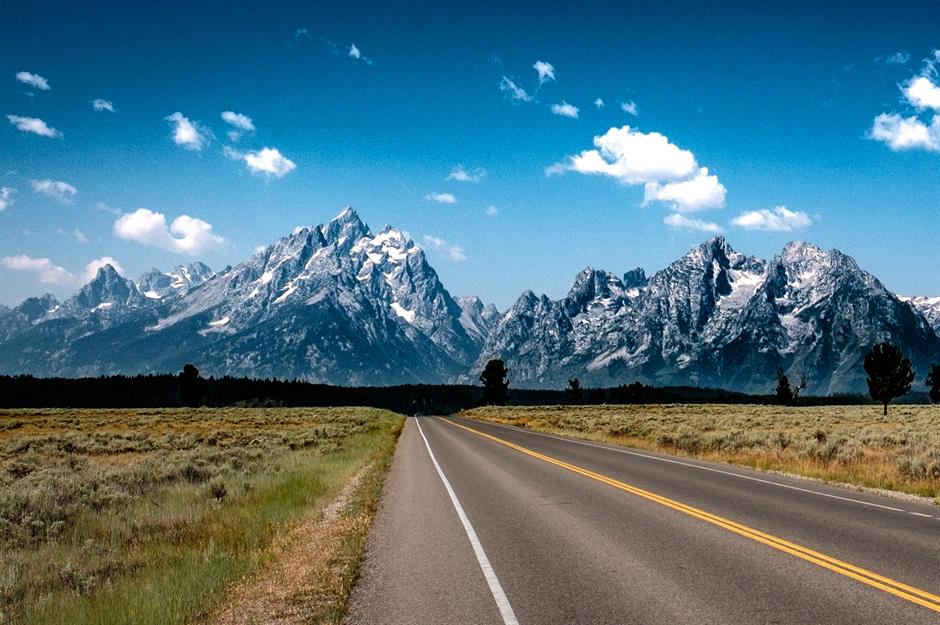
Joining Georgia with the lowest state minimum wage in the country is Wyoming, where employees who aren't protected by the FLSA could earn just $5.15 an hour. Wyoming also has the biggest gender wage gap in the country, with women earning just 65 cents for every $1 earned by a man, according to Statista data from 2019.
In early 2021, a bill to raise the wage to $15 an hour was proposed but failed to generate support. The state has declined to increase its minimum wage in 2022.
Texas: $7.25

The Lone Star State is one of 14 states that imposes the federal minimum wage of $7.25 across the board – almost. For tipped employees such as waiting staff, this figure can plummet to just $2.13 an hour. Like the previous states in our round-up, Texas won't be raising its minimum wage in 2022.
This is despite the fact that, according to the Massachusetts Institute of Technology (MIT) Living Wage Calculator, a single adult with no children would have to earn $14.01 per hour to make a living wage in Texas. This figure accounts for the cost of food, housing, transportation, and other necessities.
Oklahoma: $7.25

Oklahoma will maintain the federal minimum wage of $7.25 in 2022, having declined to change it since 2008. In July 2019, each of Oklahoma’s five members of the US House of Representatives voted against raising the federal minimum wage to $15 an hour by 2025.
In December 2020, Senator George Young filed a bill that would require employers to either increase their hourly minimum wage to $10.50 or to match the federal minimum wage (whichever figure was the greater of the two). Young said it was desperately needed as the spending power of a minimum wage pay check had decreased since the amount was last upped. Again, this bill failed to pass, leaving thousands of Oklahomans earning less than the state's lowest living wage of $13.53.
According to data from the Bureau of Labor Statistics, however, many people have it even worse. Around 12,000 hourly paid workers earned $7.25 in 2017, while 16,000 people earned less.
Kansas: $7.25

Kansas has also declined to raise its minimum wage in 2022. Historically, Midwest states have had a low minimum wage to attract businesses to the area, and many lawmakers strongly opposed President Biden’s $15-per-hour proposal, fearing that raising the minimum wage could result in job losses.
There's conflicting information on the subject. A paper published by the University of California, Berkeley found no evidence that a $15 national minimum would lead to significant job losses, and that it would it actually add $65.4 billion to the federal budget each year.
Research by the Congressional Budget Office, on the other hand, predicts it would deepen America’s budget deficit by $54 billion by 2031, and could lead to 1.4 million fewer jobs being available.
North Carolina: $7.25

North Carolina also has the federal rate of $7.25, which won't be changing in 2022. Discussing the possibility of more than doubling the current rate in 2019, Virginia Foxx, epresentative for North Carolina's 5th district, said the move was "radical, risky and unnecessary".
The current living wage in North Carolina ranges from $14.72 (for a single adult with no children) to $49.24 (for a single adult with three children). But the state’s current minimum wage is closer to the poverty wage – the amount which determines eligibility for federal assistance – of $6.13, according to the MIT Living Wage Calculator. Hospitality and care workers in cities Raleigh and Durham were among those who took to the streets in 2021 as part of the ‘Fight for $15’ demonstrations.
Utah: $7.25

The Beehive State also implements the federal minimum wage of $7.25, which is almost exactly half the state's lowest estimated living wage of $14.52.
Throughout 2021, representatives have proposed bills to raise the minimum wage. Representative Clare Collard put forward House Bill 284, which would see Utah’s minimum wage rise to $12 an hour from July 2021 and increase annually to $15 by July 2026. Fellow representative Ashlee Matthews also proposed House Bill 361, a law that would introduce a staggered schedule of minimum wage rates with different rates for urban and rural areas. Employers in cities would have to pay employees $10.75 an hour by 2028, while employers in rural areas would have to pay at least $9.25 an hour. However, neither bill passed.
Kentucky: $7.25

Despite having the fourth highest poverty rate in the US, Kentucky is sticking with the current federal minimum wage in 2022.
Democratic Senator Reggie Thomas has tried to increase the minimum wage on several occasions in recent years, but his proposal to raise the wage incrementally to $15 an hour by 2026 has fallen flat every time.
Iowa: $7.25

The minimum wage has stayed at $7.25 for more than a decade in Iowa, and if a working single parent earns that amount, the family is below the official poverty line. It has been predicted that half a million people across Iowa would benefit from an increase to $15 an hour – roughly a third of the state's workforce.
Indiana: $7.25
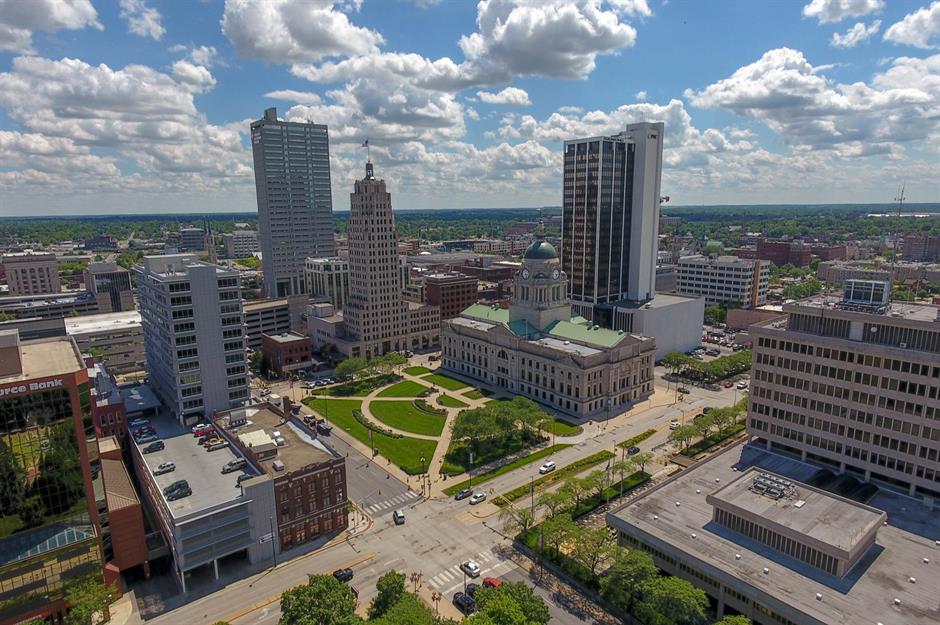
Yet another state refusing to increase its $7.25 minimum wage is Indiana, despite the fact it's $1.04 less than the poverty wage for a single parent with one child ($8.29 an hour).
The Hoosier State's Chamber of Commerce is "cautious about mandates that might discourage small businesses from hiring," its Chief Policy Officer, Mark Fisher, said in 2019. Lawmakers haven't changed their minds and Indiana won't be raising wages in 2022, having discounted a proposal that suggested increasing the minimum wage to $10 per hour this year.
Pennsylvania: $7.25

Unlike many of its surrounding states, Pennsylvania is sticking with the federal minimum wage – despite notionally passing a bill to increase the state-wide minimum wage to $9.50 an hour by 2021 back in November 2019.
Governor Tom Wolf has said: "Parents with young children literally cannot afford to work these jobs if the cost of child care eclipses their pay check. I'm urging the General Assembly to pass legislation that increases Pennsylvania's minimum wage to $12 an hour and creates a pathway to $15." The average annual cost of childcare in Pennsylvania is currently just under $12,000.
Idaho: $7.25

There will also be no change in Idaho. The cost of living is reportedly 8% lower than the national average in the Gem State, although its capital city Boise was recently declared the least affordable housing market in the US.
Some of the country's biggest tech companies, including Hewlett-Packard, are currently headquartered in Boise, and lawmakers fear that raising the minimum wage could encourage major employers to relocate.
North Dakota: $7.25

Unlike its Southern neighbor, North Dakota is yet to increase the minimum wage above federal rate and has no plans to do so in 2022.
It has followed in Alabama's footsteps by forbidding localities from adopting their own minimum wages – and although the North Dakota Minimum Wage Increase Initiative proposed increasing the minimum wage to $15 in 2020, it didn't make it onto the ballot on election day.
Wisconsin: $7.25

Although it has the same rate as the federal minimum wage, which it will keep in 2022, Wisconsin does have some protections in place for employees that aren't found in other low-wage states.
Agricultural and farm employees, who are usually exempt from the federal rate, are guaranteed $7.25 an hour, while camp counselors are eligible for special minimum pay rates of up to $350 per week.
New Hampshire: $7.25

In August 2019, New Hampshire Governor Chris Sununu vetoed a bill that would have increased the state’s minimum wage to $10 per hour in 2020 and $12 per hour in 2022. Instead, the Granite State will stick with the federal rate of $7.25, unlike many of its surrounding New England states. Sununu has claimed areas that have increased the minimum wage have seen lower take-home pay for workers because their hours have been cut.
In 2021, Democrats in the state proposed raising the minimum wage to a hefty $22.50 per hour, which many officials immediately rejected as an "outrageous" sum of money – despite the fact that the hourly living wage for a single parent with one child is $30.07.
West Virginia: $8.75

Since 31 December 2015, the minimum wage in West Virginia has been $8.75 an hour and this will be maintained in 2022.
Along with her colleagues, Senator Shelley Moore Capito introduced the Higher Wages for American Workers Act in February 2021. The act is an alternative to President Biden’s $15 minimum wage proposal that would see the federal minimum wage grow to $10 per hour over four years, and then increase based on inflation every two years thereafter.
Nebraska: $9
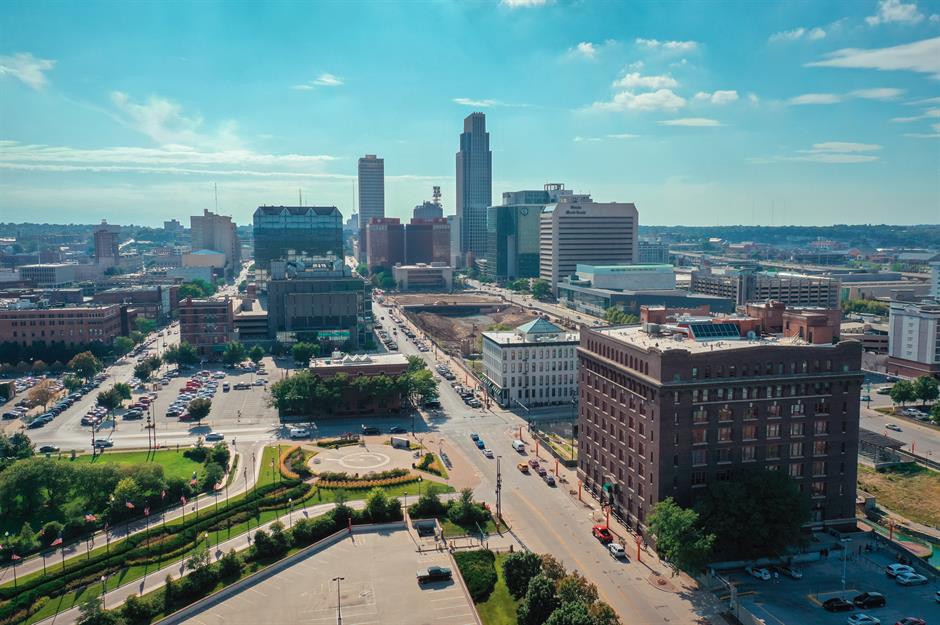
Nebraska's minimum wage hasn't changed since 2016, when it was increased to the current rate of $9 an hour. However, according to Ballotpedia, Nebraskans could expect to see the Nebraska Minimum Wage Increase Initiative on the ballot in November 2022.
If passed, this law would increase the minimum wage to $10.50 in 2023, $12 in 2024, $13.50 in 2025, and $15 by 2026.
Montana: $9.20

Montana hasn't shied away from increasing its minimum wage over the years. At the start of 2019, it raised the state minimum wage to $8.50, before increasing it again to $8.65 from 1 January 2020 and $8.75 from 1 January 2021.
This year sees its largest boost yet as the minimum wage has been bumped up to $9.20 an hour. According to the Montana Department of Labor and Industry, the minimum wage will be subject to a cost-of-living adjustment based on the Consumer Prices Index (CPI) by 30 September every year.
Ohio: $9.30

From 1 January 2022, the Buckeye State increased its minimum wage to $9.30 an hour in line with current inflation. The raise is good news for Ohio's minimum wage workforce, although the outlook could have been brighter had a proposal by two Democrat lawmakers to increase the wage to $10 an hour this year not been rejected.
Michigan: $9.87

Michigan's minimum wage has increased by a modest 22 cents for 2022, part of the state's plan to have a minimum wage of $12 by 2030. The increase is actually a year behind schedule. The current rate of $9.87 was expected to come into force at the start of 2021, but Michigan's 2018 Improved Workforce Opportunity Wage Act forbids scheduled increases if the state's annual unemployment rate for the preceding year is above 8.5%.
Unemployment in the Great Lake State was at 10.2% between January and October 2020, delaying the proposed increase. The current unemployment rate in Michigan is 5.9%.
South Dakota: $9.95

The Mount Rushmore State has introduced a minimum wage increase of 50 cents from 1 January 2022. South Dakota is also one of the few states that's increased the minimum wage for tipped employees.
Previously, this figure was $4.73 an hour, substantially higher than the federally imposed tipped minimum wage of $2.13 an hour, and it's set to increase to $4.98 this year, according to the South Dakota Department of Labor and Regulation. Compare this to the $5.15 non-tipped minimum wage in Georgia and Wyoming...
Florida: $10

Florida is the third state in our round-up that has increased its minimum wage for 2022. As in Montana, the law states that a new minimum wage must be calculated each year to reflect increases in the CPI for Urban Wage Earners and Clerical Workers in the South Region.
As such, Florida's updated minimum wage is $10 an hour and it's thought this number will increase by $1 every September until at least 2026.
Hawaii: $10.10

At present, Hawaii’s minimum wage is $10.10 an hour. Although the Aloha State has made history by passing legislation to raise the minimum wage to $18 an hour by 2028, even this won't come close to the island's living wage, which currently stands at a huge $20.61 for a single adult with no children. The state will introduce incremental changes between now and then, starting with an increase to $12 an hour this October.
According to World Population Review, Hawaii was the most expensive US state to live in last year.
Minnesota: $10.33

As of 1 January 2022, Minnesota's minimum wage is $10.33, an increase from $10.08 last year. However, this only applies to 'large employers': companies that have more than 100 employees.
For smaller employers, the minimum wage is now $8.42 an hour, up from $8.21 in 2021. Meanwhile, the cities of Minneapolis and Saint Paul both have a minimum wage of $15 for large employers. By 1 July 2024, small businesses will be legally obliged to match this salary in Minneapolis.
Alaska: $10.34

In September 2020, Alaska’s Department of Labor and Workforce Development announced that the minimum wage would be rising to $10.34 as of 1 January 2021.
The increase on the previous rate of $10.19 reflected the 1.4% CPI increase in 2019. Normally, the minimum wage is adjusted annually to account for inflation in the state but it hasn't changed for 2022.
Delaware: $10.50
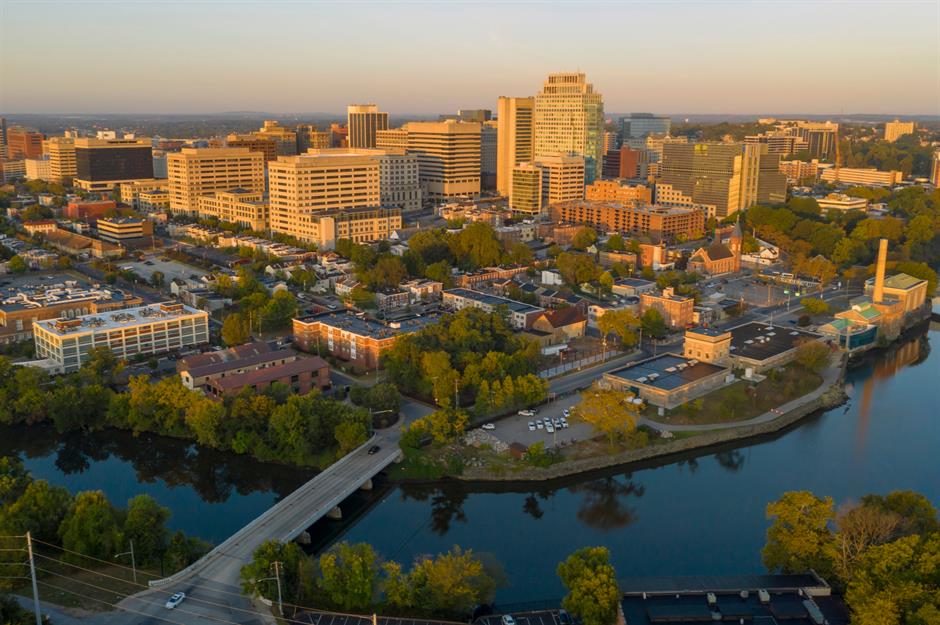
The minimum wage in Delaware is $10.50 as of 1 January 2022, an increase of $1.25 since 2020. Back in June 2021, Governor John Carney signed in a law mandating a $15 minimum wage by 2025.
The rise will be incremental, starting with an increase to $10.50 in 2022. The minimum hourly rate will then go up to $11.72 in 2023 and $13.25 in 2024, before hitting $15 the following year.
Nevada: $9.75/$10.50 from July

Back in 2019, the Silver State announced that it would incrementally raise its minimum wage to $12 an hour by 2024, starting with a 75-cent increase to $9 effective on 1 July 2020.
It was raised by another 75 cents to $9.75 in 2021 and on 1 July 2022, it will be raised again to $10.50, placing it seven months behind Delaware. The only exception is that firms which provide their employees with health insurance may pay a wage that's $1 lower than the state minimum.
Virginia: $11

Until 2021, Virginia followed the federal minimum wage. It saw the largest minimum wage increase of all 50 states when it increased the base hourly salary to $9.50 in May 2021, and this has been swiftly followed by a further rise.
From 1 January 2022, minimum wage employees are receiving $11 an hour. However, it's not all good news. The hourly living wage for a single adult with no children is $16.61, so further increases are arguably necessary.
Arkansas: $11

Arkansas was one of 20 states that increased its minimum wage on New Year's Day in 2021. But it won't be raising wages again this year. Instead, Arkansas will keep its current rate of $11 an hour for non-tipped employees. The living wage in Arkansas is $13.29 for a single adult with no children.
Missouri: $11.15

As of 1 January, the minimum wage in Missouri is now $11.15. Legislators plan for the minimum wage to increase by 85 cents every year until it hits $12 an hour in 2023.
Tipped employees get a better deal in Missouri than elsewhere in the US. They must be paid at least 50% of the non-tipped minimum wage (now $5.58), with a guarantee that their employer will top up their salary if their tips don't take their total pay to $11.15 an hour.
New Mexico: $11.50

New Mexico’s state minimum wage teetered at just 25 cents above the federal rate for a decade – but there have been big changes in the last couple of years.
From 1 January 2020, a new rate of $9 was introduced. This rose to $10.50 in 2021 and $11.50 in 2022, making it one of the most generous yearly increases on this list. By 2023, the minimum wage will be $12 across New Mexico. Some areas, such as Santa Fe City, are ahead of the curve and already have a minimum wage of $12.32.
Illinois: $12

As part of its plan to introduce a $15 hourly minimum wage by 2025, Illinois has been increasing the minimum wage by $1 every year.
From 1 January 2022, non-tipped employees are earning at least $12 an hour in the Prairie State, though workers in Chicago are steps ahead and already earn $15 an hour as of 1 August 2021. In Cook County, meanwhile, the minimum wage has been $13 since 1 July 2020.
Rhode Island: $12.25

Rhode Island has upped its minimum wage again this year. After raising it to $10.50 in 2019 and $11.50 in 2020, it's now $12.25 an hour for non-tipped employees.
The law was signed in by Governor Dan McKee on 20 May 2021 and will see the Ocean State's minimum wage increase year on year until it hits $15 in 2025.
Maryland: $12.50
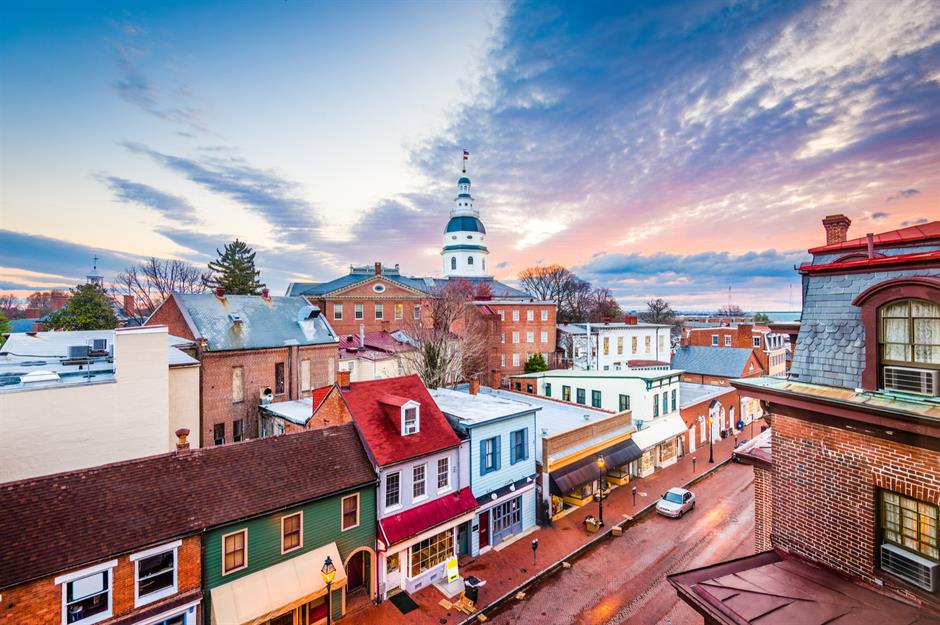
Back in March 2019, Maryland became the country's sixth state to pass a bill that will see the minimum wage increase to $15 an hour by 2025. Last year, the minimum wage rose to $11.75 and now, as of 1 January 2022, it's $12.50 for non-tipped employees at large businesses.
Over the next couple of years, the wage will increase by 75 cents until it hits $15. Small employers with a maximum of 14 employees will be expected to match the $15 minimum wage by July 2026. In Montgomery County, meanwhile, the minimum wage is now $15 as of New Year's Day, which is an increase of $1 compared to last year.
Vermont: $12.55

As of 1 January 2022, the minimum wage in Vermont has increased by 80 cents from $11.75 to $12.55 an hour. Tipped employees will also receive a raise, as they're entitled to 50% of the non-tipped minimum wage.
Unlike some other states, Vermont hasn't passed a bill to raise the minimum wage to $15 by 2025. The increases for 2021 and 2022 were approved back in 2019, but from 2023 onwards the annual adjustments will be determined by the CPI only.
Colorado: $12.56

Colorado has raised its minimum wage to $12.56, an increase of 24 cents from 2021. The state's tipped minimum wage is now $9.54.
Residents of Denver, the state capital, have already passed the $15-an-hour milestone. On New Year's Day, the city's minimum wage increased from $14.77 to $15.87 for employees at both small and large employers, making it one of the highest minimum wages anywhere in the country. But considering the Denver living wage is $17.40, this will still leave some families struggling to cover the bills.
Maine: $12.75
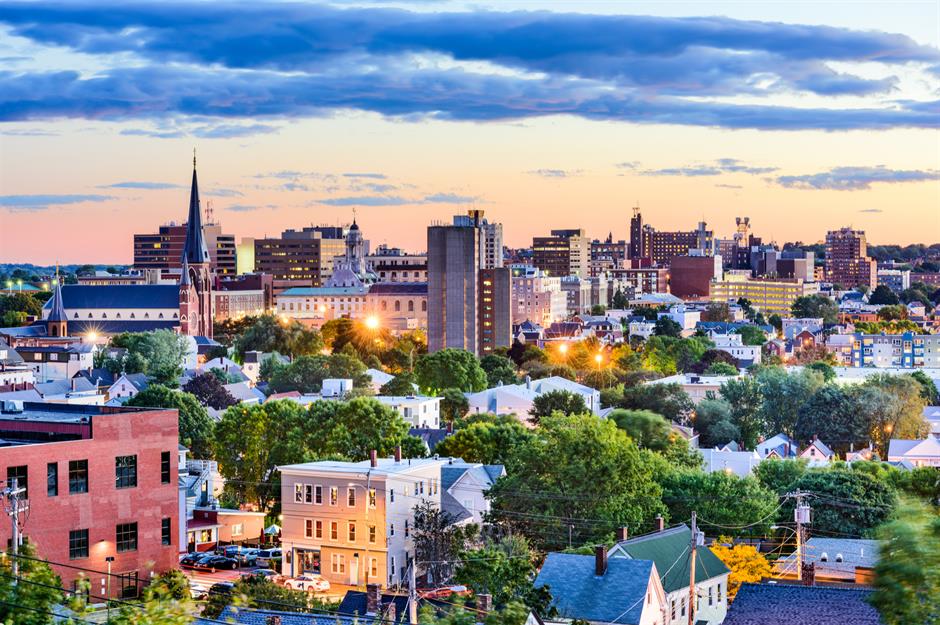
Maine approved a motion to increase the state's minimum wage in line with the cost of living back in 2016. Its minimum wage was $7.50 at the time and it has since increased by more than $5 to hit $12.75 this year. Meanwhile, the minimum wage for tipped employees has risen from $6 to $6.38 an hour.
Subsequent yearly increases will be based on the cost of living index for the Northeast region, rather than aiming for a target of $15 an hour.
Arizona: $12.80

On 1 January 2022, Arizona introduced a new minimum wage of $12.80 – 65 cents higher than its previous rate of $12.15.
Tipped employees will be paid $3 less, receiving a minimum hourly wage of $9.80. However, this figure varies across the state. In the city of Flagstaff, for example, tipped employees receive a minimum of $12 an hour, while non-tipped employees are set to receive $15.50 as of 2022.
New Jersey: $13

New Jersey is yet another state that has pledged to increase its minimum wage to $15 by 2025. Last year saw the minimum wage rise to $12 and, as of New Year's Day, it's now $13, with subsequent increases of $1 expected in 2023 and 2024.
Meanwhile, tipped employees receive $5.13 an hour, less than half the standard minimum wage. This is despite the fact that, at $16.20 for a single adult with no children, the living wage in New Jersey is higher than most places in the US.
New York: $13.20

In the state of New York, the minimum wage is now $13.20, up from $12.50 last year. But the rules are different in New York City, Long Island, and Westchester County, all of which have imposed their own minimum wages of $15 an hour.
New York City introduced the $15 rate back in 2019, making it one of the nation's first jurisdictions to do so. However, the state-wide living wage is $18.62 for a single adult with no children, which means the minimum pay is still falling considerably short.
Oregon: $12.75/$13.50 from July

From July 2022 onwards, the minimum wage in the Beaver State will be $13.50, an increase of 75 cents from its previous rate of $12.75. This isn't the case state-wide, however. In the Portland Metropolitan Area, the minimum wage will increase to $14.75.
Any increases after 2023 will be based on the region's current inflation rate. In Oregon's 'non-urban' counties, 18 counties in the south and west of the state, the minimum wage is lower at $12.50 an hour. That's an increase of 50 cents from last year, and lawmakers have agreed that this rate will increase by 50 cents again next year. Thereafter, it will simply be $1 less than Oregon's standard minimum wage.
Connecticut: $13/$14 from July

In July this year, the minimum wage in Connecticut will increase to $14, before rising to $15 in 2023. The wage has increased by $1 every year since 2020 as part of the state's plan to introduce a $15 minimum wage – just 98 cents lower than the standard living wage for a single adult with no children, according to MIT's Living Wage Calculator.
If the federal minimum wage ever increases from $7.25, Connecticut will adjust its own wage accordingly. The law states that its minimum wage will increase to be one half of 1% more than the federal minimum wage if an increase occurs, rounded to the nearest whole cent.
Massachusetts: $14.25

The Bay State is one of the most expensive parts of the country, requiring an hourly living wage of $17.74 for a single adult with no children.
This year, it's raised its minimum wage from $13.50 to $14.25 for non-tipped employees, before another increase next year will take it to $15 an hour. Tipped employees now earn $6.15 an hour, up from $5.55 last year.
Washington: $14.49

Between 2020 and 2021, Washington increased its minimum wage by just 19 cents. This year, the Evergreen State has boosted its minimum rate by a much healthier 80 cents an hour, bringing it to $14.49 as of 1 January 2022. It's now the second highest paying state in the whole of the US.
In Seattle, meanwhile, employees at large companies, or small companies who don't provide healthcare benefits, can now expect a minimum of $17.27 an hour. Employees at small companies in Seattle that do provide healthcare benefits will get $15.57 an hour.
California: $15

The state with the highest minimum wage is California, which has increased its hourly rate to at least $15. California decided to raise its minimum wage to $15 by 2022 back in 2016. The rate currently applies to employees at bigger businesses, but next year smaller employers will be expected to follow suit.
And some jurisdictions are going even further. In July, West Hollywood will raise its minimum wage again, setting a rate of $16.50 for large employers and $16 for smaller employers. In fact, more than 30 separate jurisdictions in California will impose minimum wages that are higher than the state's standard $15 this year. These include the city of Mountain View, which introduced its own minimum wage of $17.10 of New Year's Day.
DC: $15.50
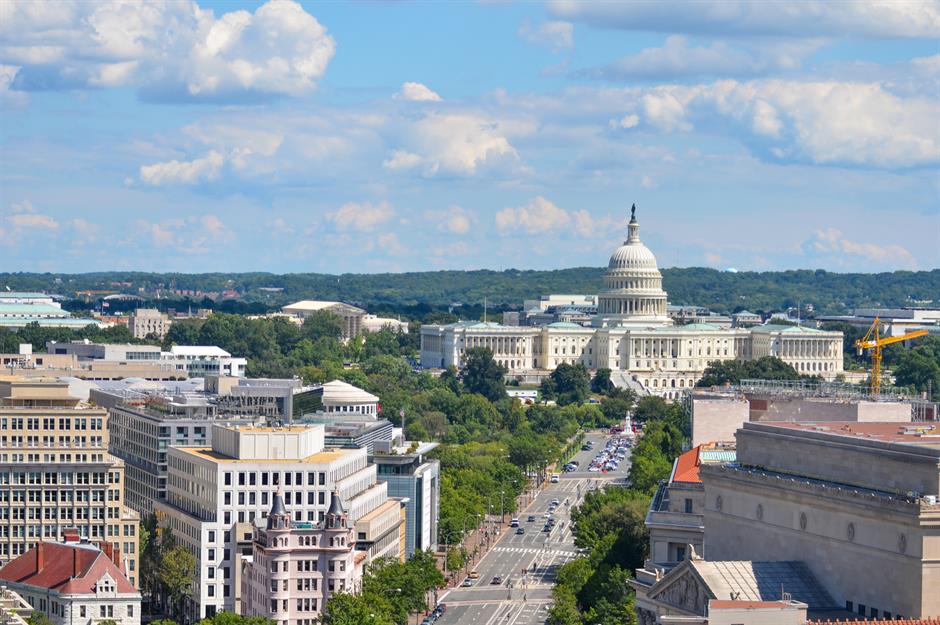
The District of Colombia might not be a state – yet – but deserves an honourable mention as the capital of America. DC introduced a $15 minimum wage back in 2020. This increased to $15.20 last year before increasing again to $15.50 on 1 January 2022.
The district determines its annual wage increases based on the CPI. As its current hourly living wage is a whopping $20.49 for a single adult with no children, the recent increases could still leave minimum wage employees struggling financially.
Now discover how America's wealth gap has soared over the last 100 years
Comments
Be the first to comment
Do you want to comment on this article? You need to be signed in for this feature
Most Popular
Features How Michael Jackson's children boost their bank balances